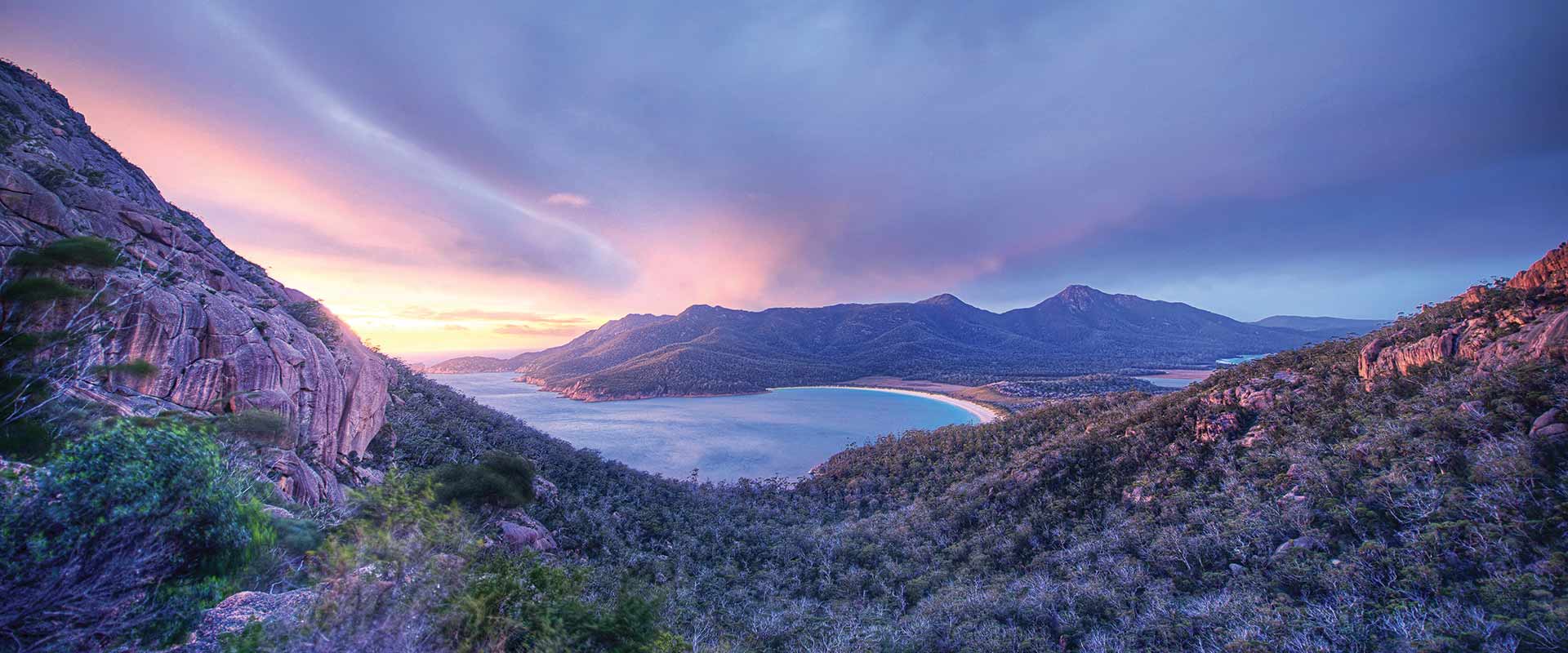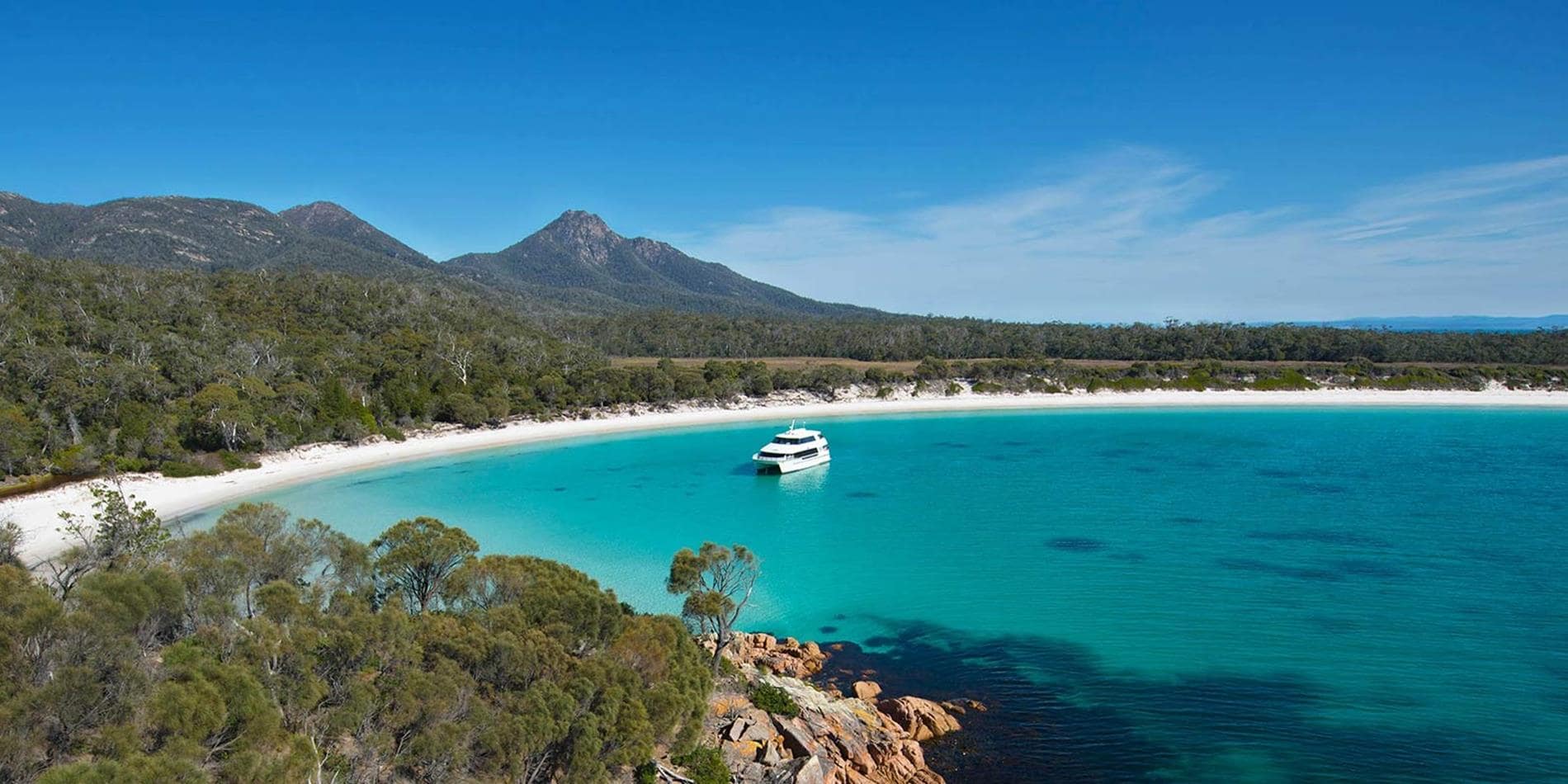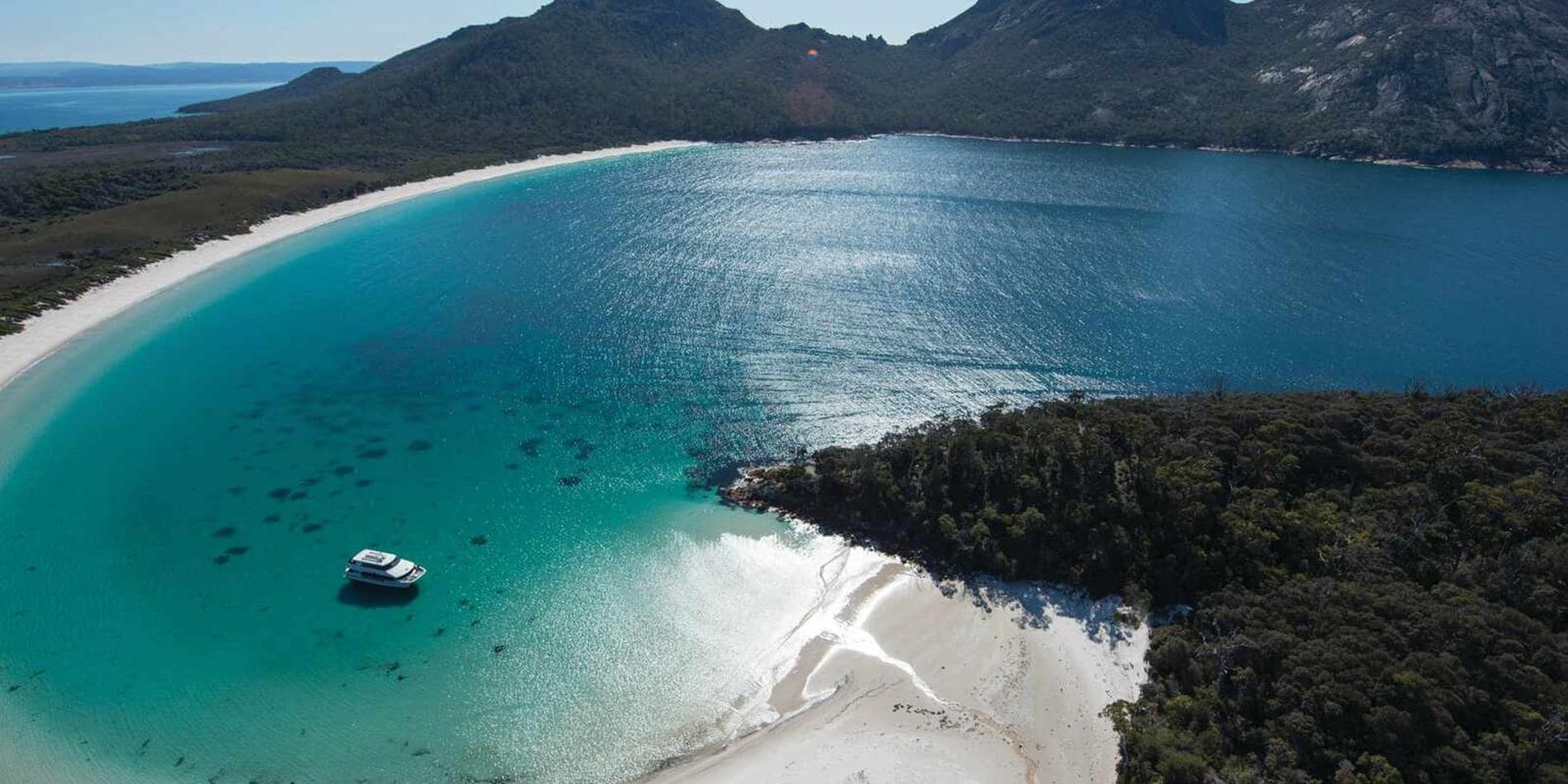Explore Tasmania's Wilderness Heritage
It almost seems unfair how much of Australia’s unspoilt wilderness is concentrated in tiny Tasmania. Troy Evans examines the history of its spectacular landscapes, their earliest arrivals, and the beauty that has long endured thanks to its relative isolation.
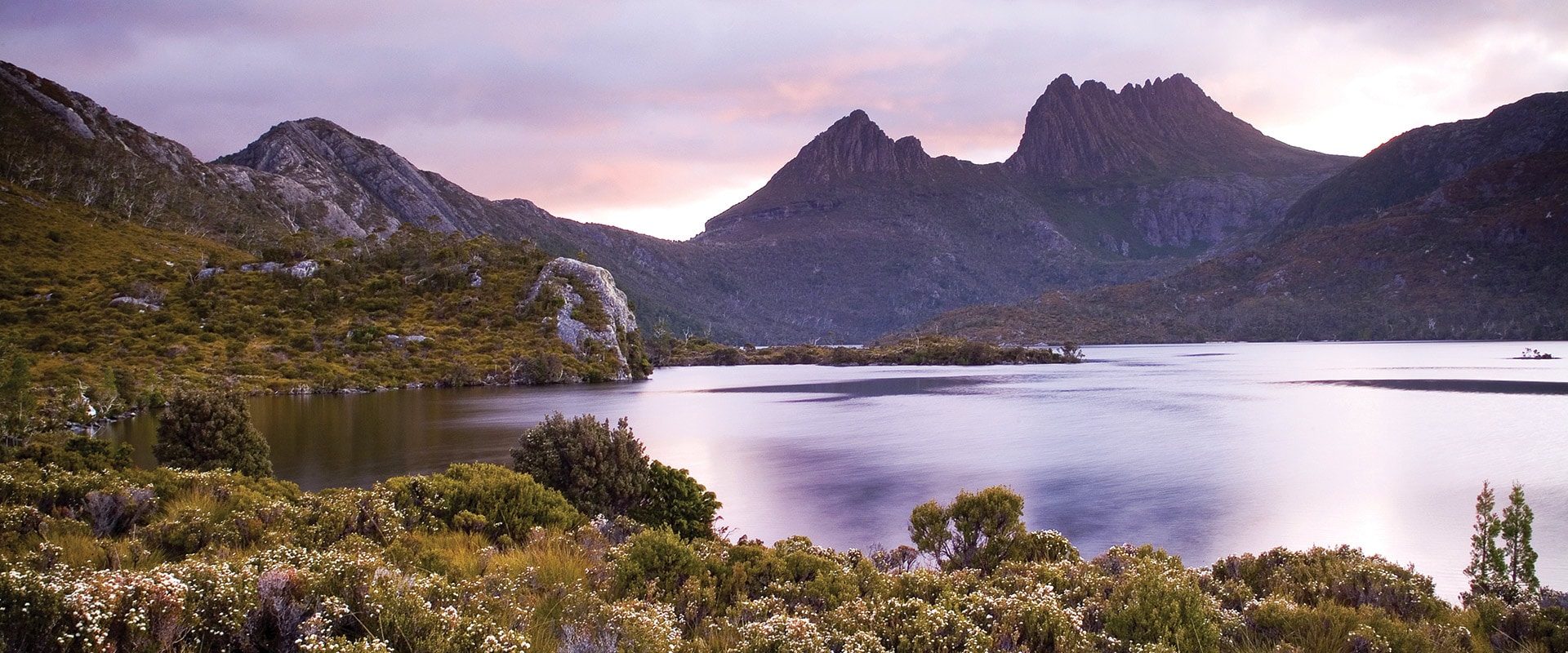
Jagged peaks, perfectly preserved forests and sweeping shorelines lend the mountains and coastal areas of Tasmania a sense of the eternal. Our only island state boasts pristine rainforests and national parks in abundance: from the ancient wonders of the Tarkine in the state’s north, the breathtaking alpine region of Cradle Mountain-Lake St Clair National Park, its oldest national park at Mount Field, to Freycinet National Park on its east coast.
The Tasman Sea laps at the shores of Freycinet. Sweeping panoramas paint pictures of pink granite cliffs that slope gradually to meet crystal-clear waters. The gradual ascent to Wineglass Bay Lookout, meanwhile, offers spectacular views of the sweeping arc shaping the stunning coastline far below. This area was home to the Toorernomairremener band of the Oyster Bay tribe of Indigenous Tasmanians, whose middens can still be found today along the sand dunes at Richardsons and Hazards beaches.
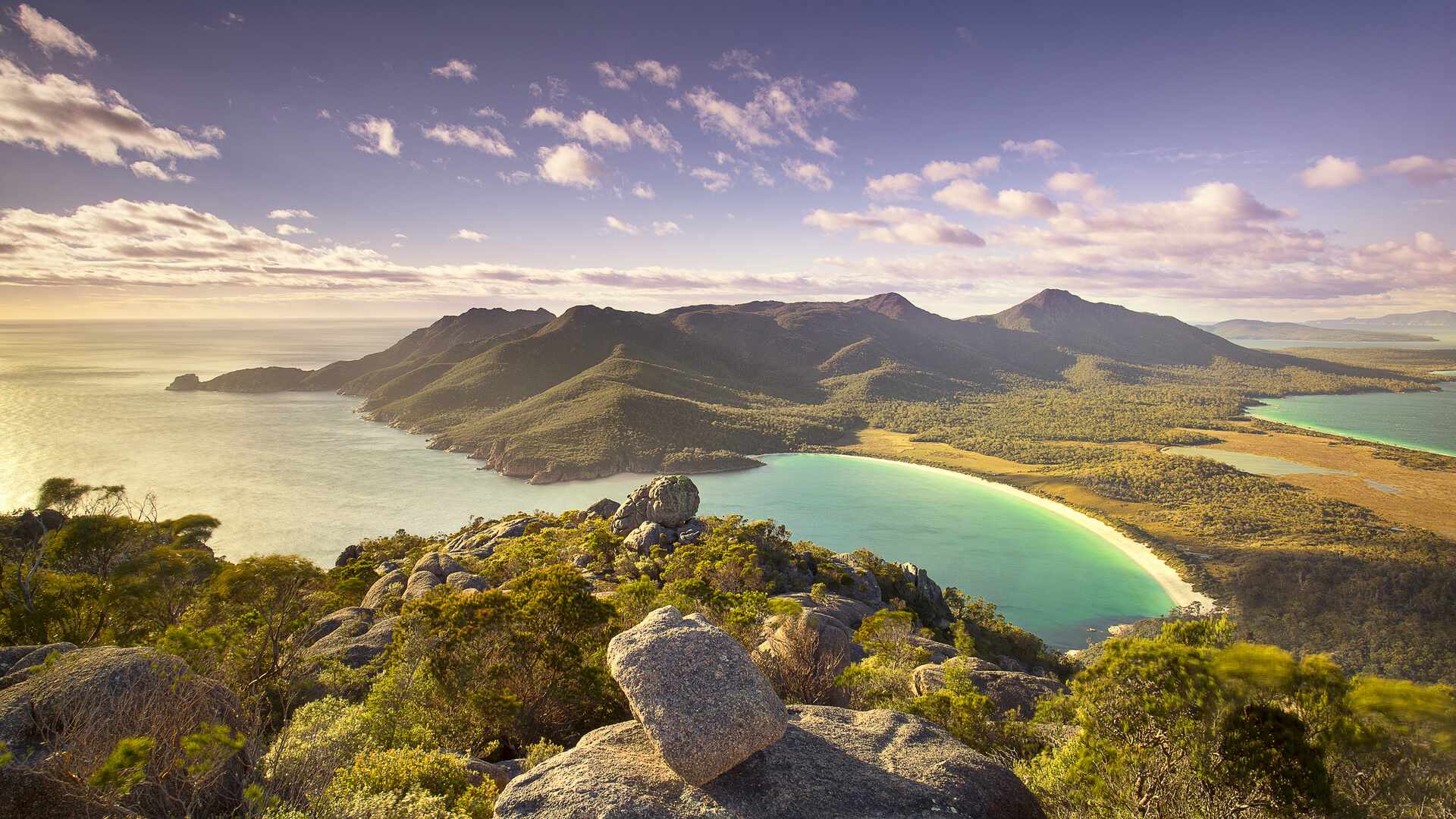
Abel Tasman happened upon this breathtaking stretch of coastline in 1642 when navigating the east coast of Tasmania. From that time on, the majestic Freycinet landscape played host to a long European history of whaling, tin and coal mining, evidence of which can be observed in the network of old mine shafts and whaling stations dotted along the secluded bays.
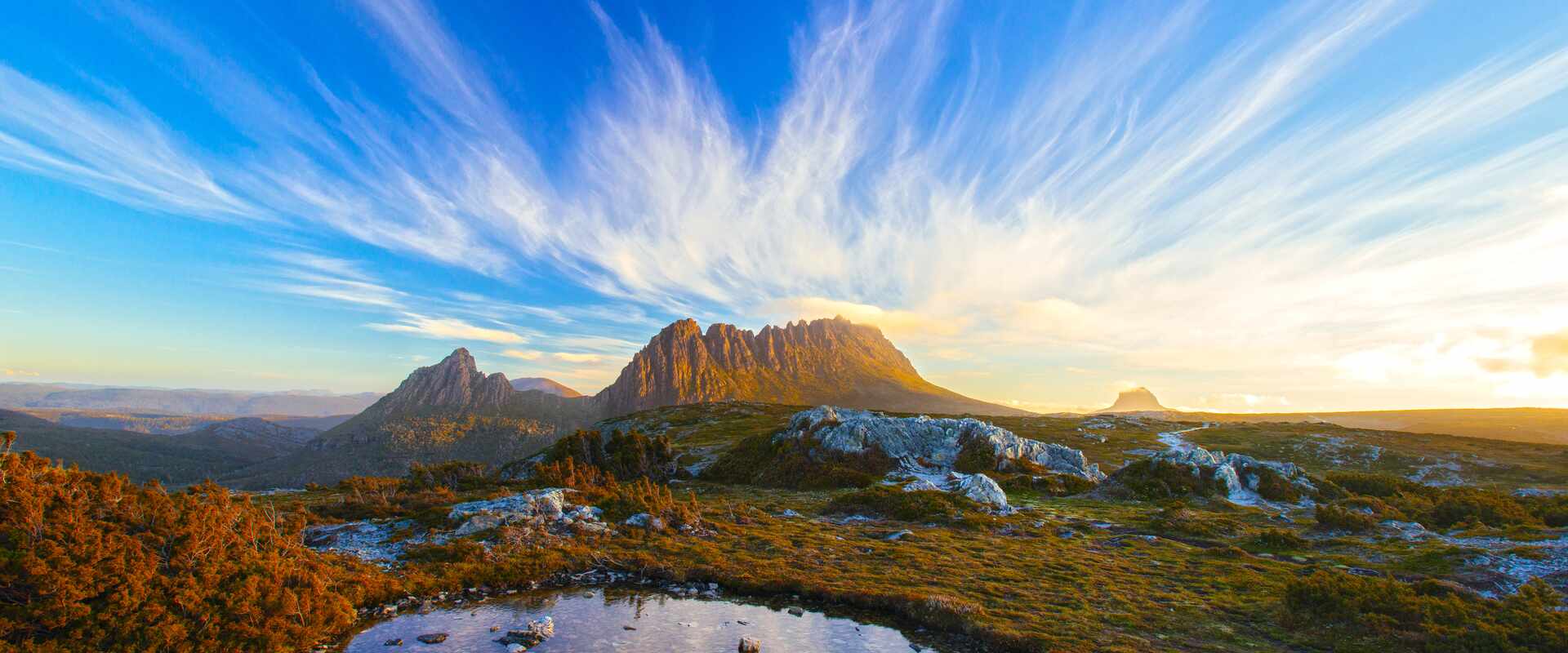
Reaching the quaint Waldheim Chalet provides the chance to glimpse inside the humble former home of Gustav and Kate Weindorfer, one-time custodians of what is now the national park. A trained botanist, Gustav initially migrated to Melbourne from his native Austria. It was here that he met his future wife, Kate. The pair subsequently made the journey to Cradle Mountain and on reaching its summit, Gustav was said to have remarked: “This must be a national park for the people. It is magnificent, and people must know about it and enjoy it.”
Beyond Lake St Clair, and the River Derwent, lies Mount Field National Park, Tasmania’s oldest. Having received its national park status in 1916, Mount Field began to take shape thanks to park ranger Bill Belcher. Belcher lived in the area around Russell Falls and made it his business to know the park’s every detail. After establishing tracks to the park’s most striking sections, he constructed several huts at those sites, in which visitors could shelter.
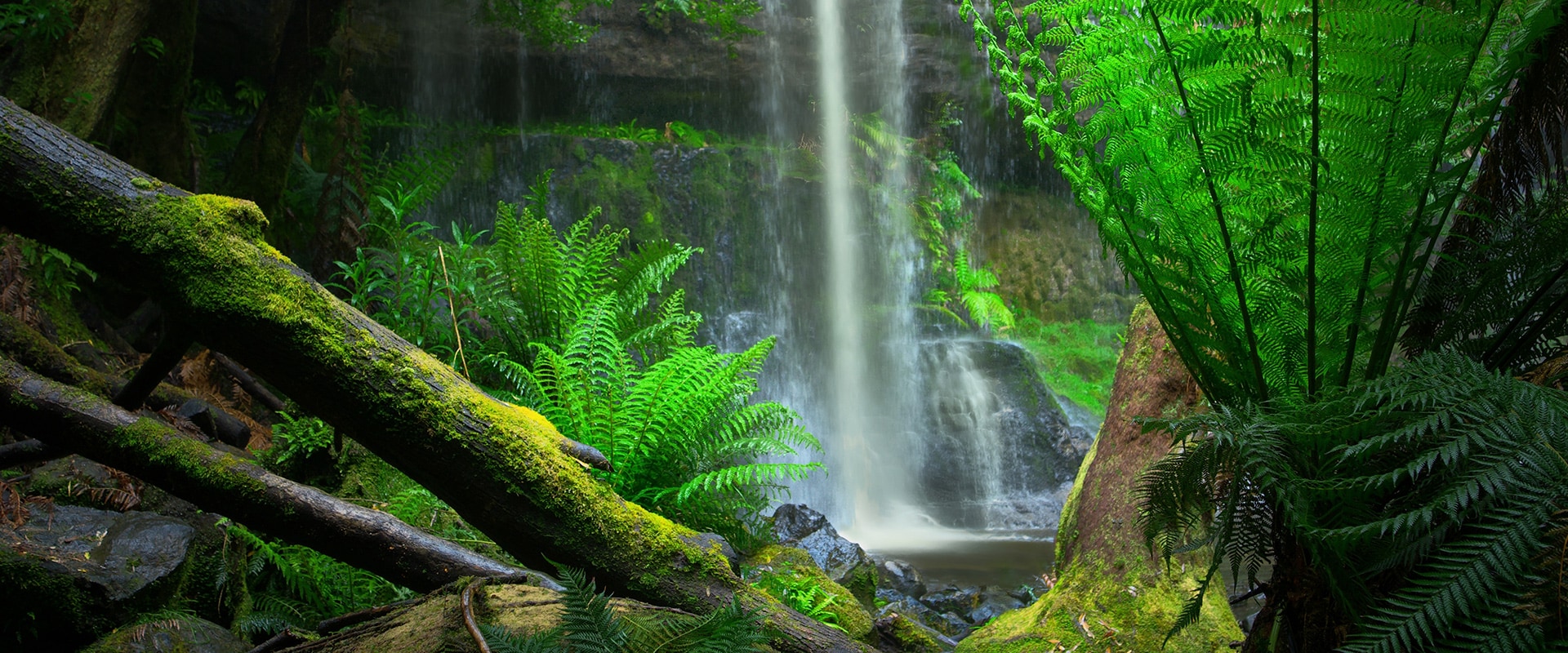
Predating Belcher’s arrival, Russell Falls had already been declared a reserve in 1885, its two-tiered waterfall embraced by tall wet eucalypt forest. Seemingly, even the trees recognised the value of the falls; their towering forms today provide cover over the area, as if to direct visitors’ eyes squarely toward the cascading waters.
Three hundred kilometres north, on the edge of Bass Strait, we find the second largest expanse of cool temperate rainforest in the world, the Tarkine. Its diverse forests offer a reminder of Australia’s earlier connection to Patagonia, Papua New Guinea and New Zealand, as part of the supercontinent Gondwanaland. Known to Aboriginal people as Takayna, the resource-rich coastline was considered ideal for semi-permanent habitation, the Tarkiner having previously lived a nomadic existence.
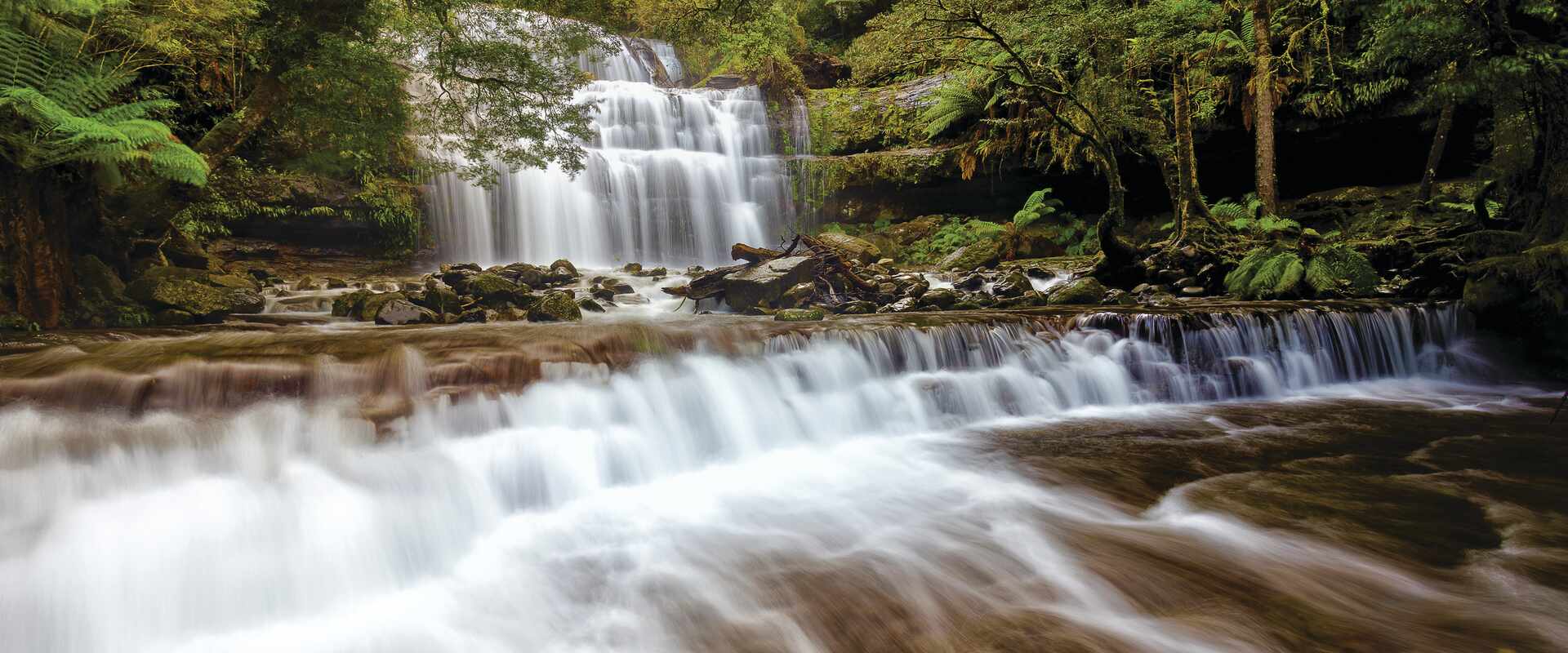
This precious environment is also home to the extremely rare orange-bellied parrot and the similarly endangered swift parrot, both of which breed here before migrating to the Australian mainland for the winter. As we prepare for our own travels, these journeys, both historic and contemporary, offer us the opportunity to see Tasmania in a new light.
Need to Know
Discover the best of Tasmania’s wilderness areas on APT’s 10 Day Heart of Tasmania tour.
Experience – Immerse yourself in Tasmania’s extraordinary rainforests and national parks, beginning with Russell Falls and Cradle Mountain-Lake St Clair National Park. The Tarkine follows, with its cool temperate rainforest. At Freycinet National Park, enjoy coastal views from Cape Tourville.
Stay – Look out over Great Oyster Bay during a two-night stay at the luxurious Freycinet Lodge.
Taste – Enjoy the region’s celebrated wines during lunch and a tasting at Josef Chromy winery.

